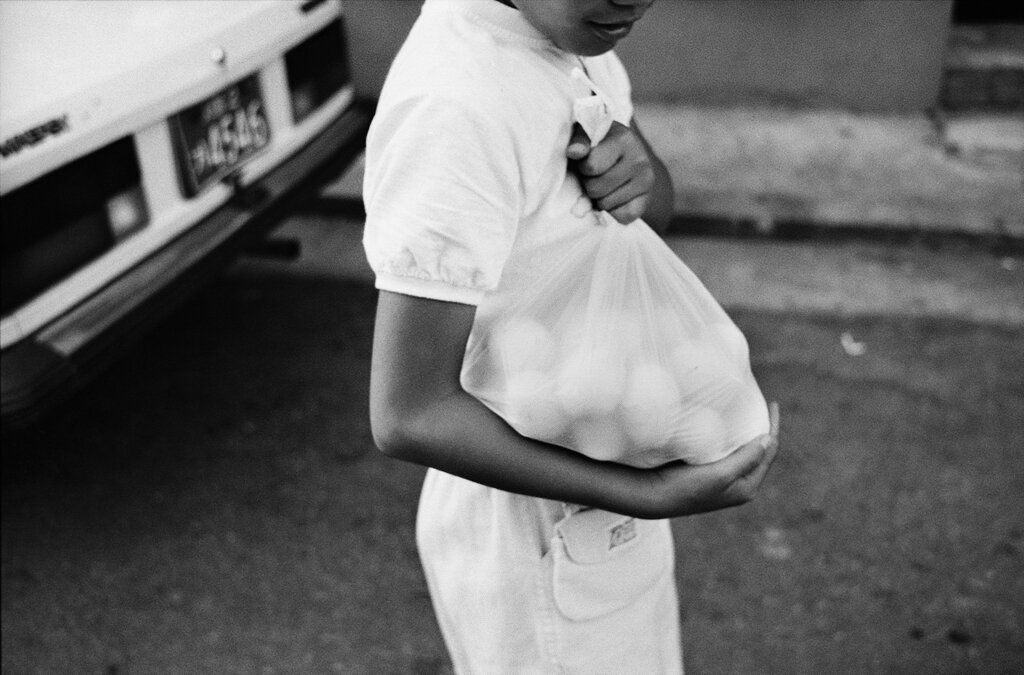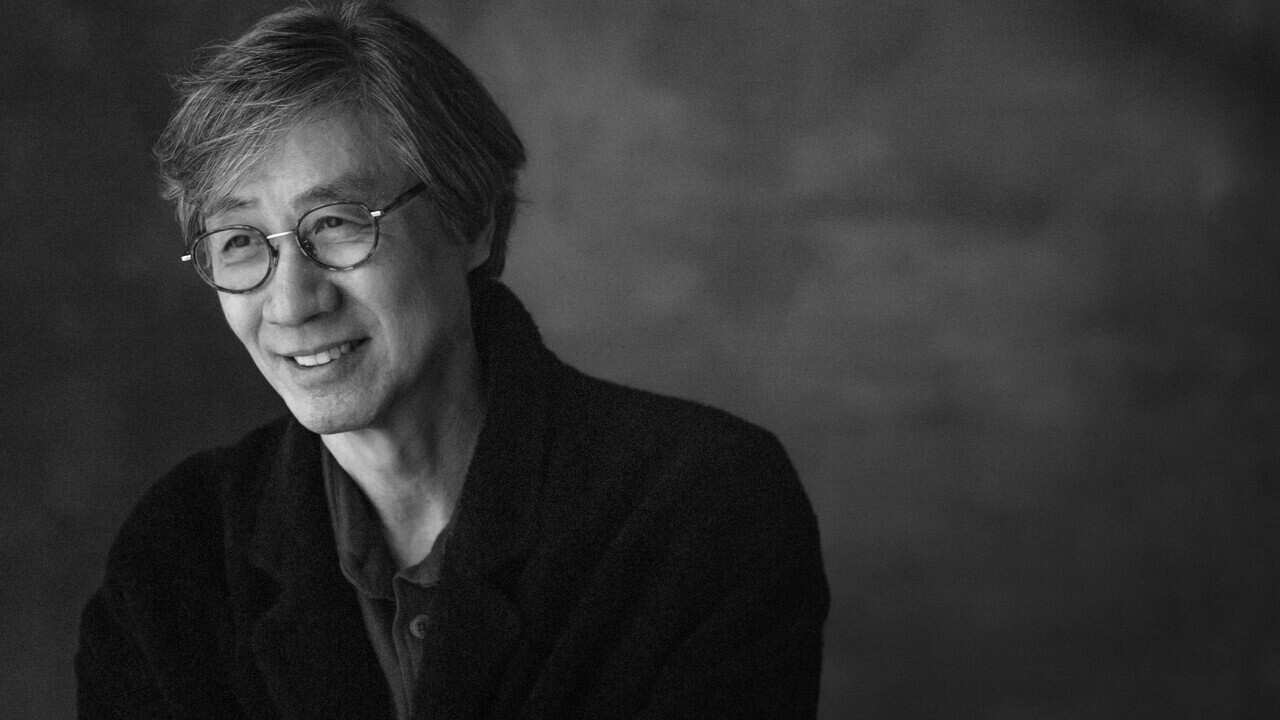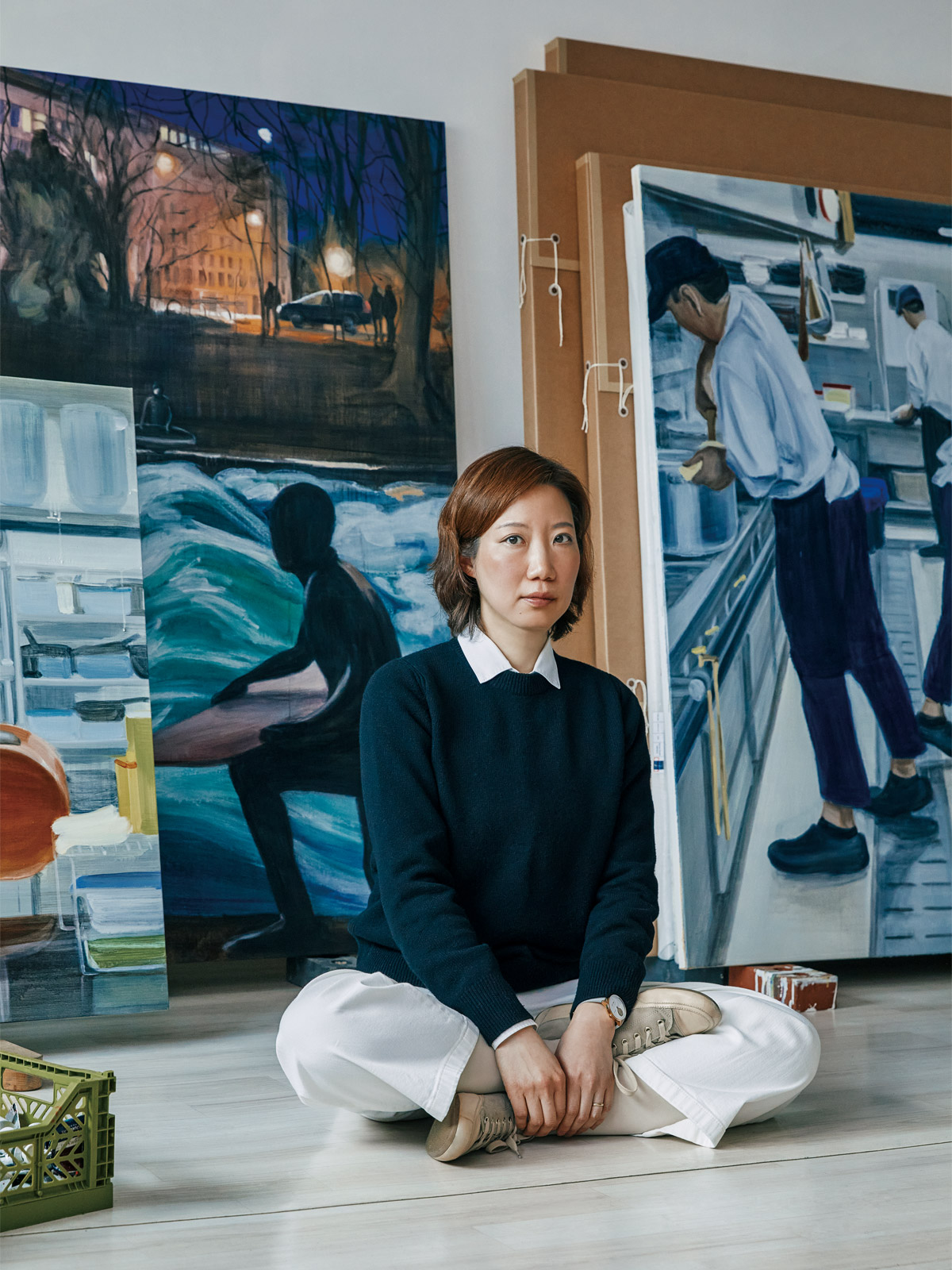Koo Bohnchang (b. 1953) has played a
key role in the inception and development of contemporary Korean photography
from the 1980s to the present. By introducing a new format called "making
photo," Koo broke new ground in Korean contemporary photography by
transcending the traditional role of photography as an objective record and
enabling the recognition of photography as an art capable of subjective
expression, reflecting the attributes of various media such as painting,
sculpture, and printmaking.
 Koo Bohnchang, Clandestine
Pursuit in the Long Afternoon 004, 1985 ©Koo Bohnchang
Koo Bohnchang, Clandestine
Pursuit in the Long Afternoon 004, 1985 ©Koo BohnchangAn
ordinary office worker before he became a photographer, Koo Bohnchang studied
photography in Germany in 1979. As a foreigner, he photographed the unfamiliar
German city, and after returning to Seoul right before the 1988 Seoul Olympics,
he once again experienced the loneliness of being a foreigner as he saw the
rapidly changing Seoul city.
To
soothe these feelings of loneliness and anxiety about his future as a
photographer, he photographed the kitschy Seoul outside during the day and
himself in his room at night. Clandestine
Pursuit in the Long Afternoon is a series of four photographs of daily life in random nooks
and crannies of Seoul, taken with a camera equipped with color and
black-and-white film. It was his first step as an artist.

Koo Bohnchang, Metamorphosis 01, 1988 ©Seoul Museum of Art
The Metamorphosis series is works
of photographs with a performative element, in which the artist imagines a pile
of ropes on the beach as a framework that binds him and directly expresses his
struggle to break free. After shooting, he scratched the film, overlapped two
films to make a collage, and used photographic paints to colorize the collaged
film before re-printing it.
This series was presented in “The New
Wave of Photography” at Walker Hill Art Center, Seoul in 1988, which was
curated and participated in by Koo himself, and was named "making
photo," and was an important event that brought Korean photography into
the contemporary art.

Koo Bohnchang, In the Beginning 10-1, 1996 ©Koo Bohnchang
In the 90s, he continued his experiments with ‘making photo’ with the series In the Beginning, in which he printed large-scale photographs of his own body parts, such as his hands and feet, and sewed them together. This began as an exploration of the self and became a metaphor for the constant connections in our lives as multiple photographs were stitched together with thread to form a single work.
 Koo Bohnchang, Portraits
of Time 05, 1998 ©Koo Bohnchang
Koo Bohnchang, Portraits
of Time 05, 1998 ©Koo BohnchangThe death of his father in 1996 marked
a major change in his work. The artist, who had focused on mediumistic
experimentation, began to create static and lyrical works that reflected the
cycles of nature.
He traveled to Kyoto, Japan, to cope
with his loss. At one temple he visited, he found the exterior wall covered in
dust, which he photographed and used to create his series of Portraits of
Time. From then on, his work became contemplative and static, reflecting
universal life rather than experimental or visually striking.

Koo Bohnchang, Moon Rising III, 2004-2006 ©Seoul Museum of Art
Koo Bohnchang became interested in
Joseon White Porcelain, which was dispersed to other countries after the
Japanese occupation, when he saw a photograph of Dame Lucie Rie, a pupil of
Bernard Howell Leach regarded as the “Father of British studio pottery,” with a
Joseon White Porcelain Moon Jar.
Koo began photographing White
Porcelain Moon Jar around the world and bringing them back to Korea through
photographs. Among them, Moon Rising III is a photography of 12 Moon Jars
from various countries, including the United Kingdom and Japan. In Moon
Rising III, black and white tones change as if to show the process of the
moon setting and rising.

Koo Bohnchang, DMZ, SW 12 2010 ©Koo Bohnchang
In 2010, Koo produced two new series
that photographed objects which contain a painful history, such as war and
exploitation. One is the DMZ series, which was created at the request of
the Ministry of National Defense to record the scars of the Korean War in the
eyes of a photographer on June 25th, 2010, to mark the 60th anniversary of the
outbreak of the Korean War.
In response, Koo visited the War
Memorial of Korea in Yongsan and photographed artifacts and debris that
retained the horrors of the war. The DMZ series comforts the souls of
those who lost their lives at a young age and the hearts of their families,
while reminding us of the reality of Korea, where the DMZ still exists.
In this way, Koo's work began with his
own inner side and continued with the story of the natural order of life and
death, and the pain and reality of the times. His photographs are not just
about documenting objects. Koo believes that even trivial objects have souls,
and he encounters the world through his camera.
"Catching the soul of the things I'm looking at is the story I'm trying to tell in my photographs. I use the expression 'stealing the soul' to describe it."
 Artist Koo
Bohnchang. Photo: Oh Seokhoon ©SBS
Artist Koo
Bohnchang. Photo: Oh Seokhoon ©SBSKoo Bohnchang attended Yonsei University majoring in Business
Administration and later studied photography in Hamburg, Germany. He was a
professor at Kaywon School of Art and Design, Chung Ang University, Seoul
Institute of the Arts and a visiting professor in London Saint Martin School.
His works have been exhibited in solo
exhibitions including Peabody Essex Museum, Massachusetts; Camera Obscura,
Paris; Kukje Gallery, Seoul; Kahitsukan Kyoto Museum of Contemporary Art, Kyoto;
Philadelphia Museum of Art, Philadelphia; Seoul Museum of Art, Seoul; and many.
His collections are at San Francisco
Museum of Modern Art, Museum of Fine art, Houston, Kahitsukan Kyoto Museum of
Contemporary Art, National Museum of Contemporary Art, Korea, Leeum, Samsung
Museum of Art, Seoul and publications are ‘Deep Breath in Silence’, ‘Revealed
Personas’, ‘Vessels for the Heart’, 'How to Capture the Touching Moment' in
Korea and ‘Hysteric Nine’, ‘Vessel’, ‘Everyday Treasures’ in Japan.


















